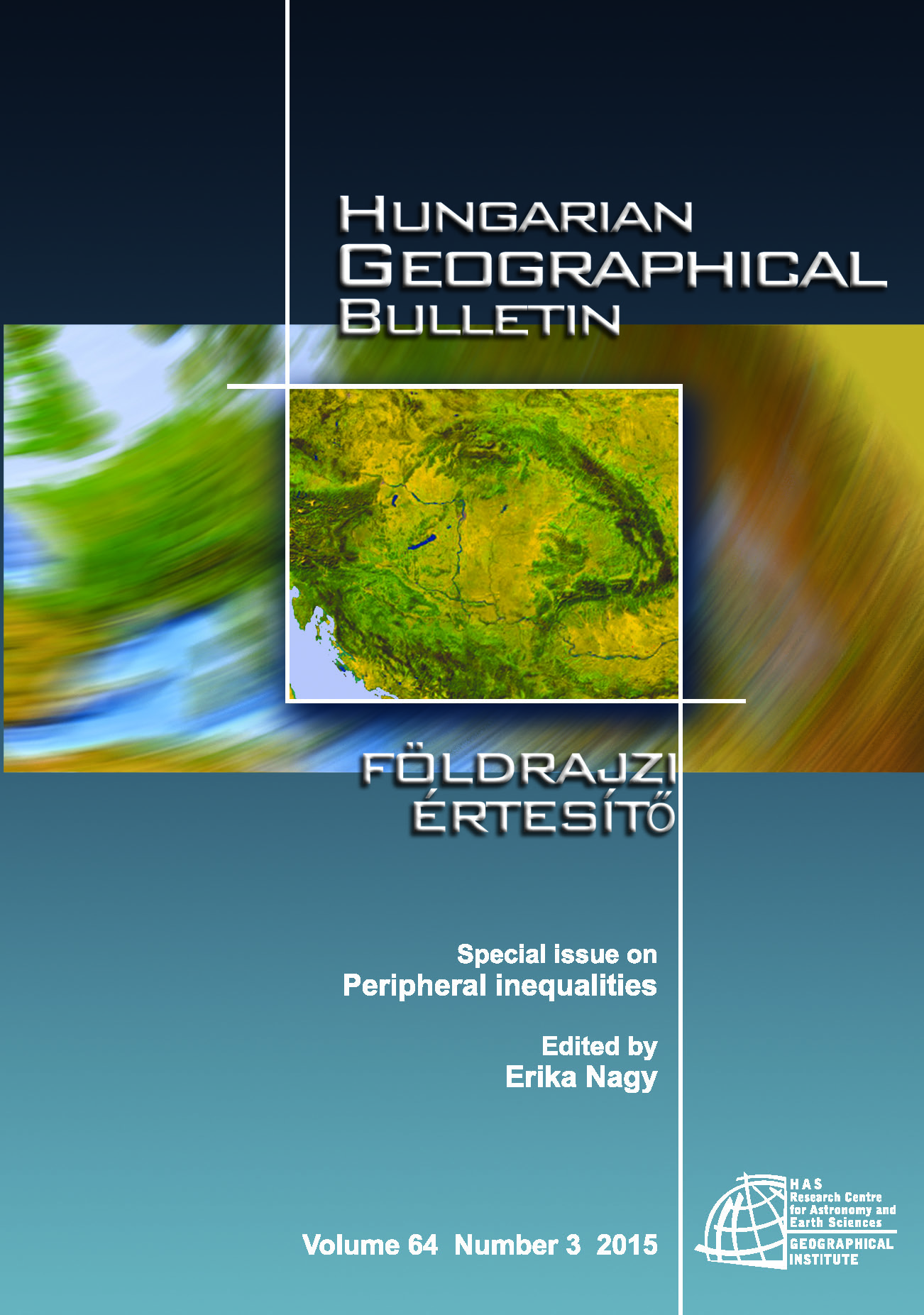Discussing inequalities from the periphery
Abstract
-
References
Berndt, M. and Colini, L. 2013. Exclusion, marginalization and peripheralization. Working Paper 49. Berlin, Leibniz Institute for Regional Development and Structural Planning.
Ehrlich, K., Kriszan, A. and Lang, T. 2012. Urban Development in Central and Eastern Europe - Between Peripheralization and Centralization? disP - The Planning Review 48. (2): 77-92. https://doi.org/10.1080/02513625.2012.721611
Hadjimichalis, C. 2011: Uneven geographical development and socio-spatial justice and solidarity: European regions after the 2009 financial crisis. European Urban and Regional Studies 18. (3): 254-274. https://doi.org/10.1177/0969776411404873
Hirt, S., Sellar, C. and Young, C. 2013. Neoliberalism Meets the Eastern Bloc: Resistance, Appropriation and Purification in Post-socialist Spaces. Europe-Asia Studies 65. (7): 1243-1254. https://doi.org/10.1080/09668136.2013.822711
Hörschelmann, K. 2001. Breaking ground - Marginality and resistance in (post) unification Germany. Political Geography 20. (8): 981-1004. https://doi.org/10.1016/S0962-6298(01)00041-5
Kuus, M. 2013. Places of lower rank: Margins in conversations. Political Geography 37. 30-32. https://doi.org/10.1016/j.polgeo.2013.04.005
Lang, T. 2015. Socio-economic and Political Responses to Regional Polarisation and Socio-spatial Peripheralisation in Central and Eastern Europe: a research agenda. Hungarian Geographical Bulletin, 64. (3): 171-185. https://doi.org/10.15201/hungeobull.64.3.2
Massey, D. 2008. For Space London, SAGE
Nagy, E., Timár, J., Nagy, G. and Velkey, G. 2015. The Everyday Practices of the Reproduction of Peripherality and Marginality in Hungary. In Understanding Geographies of Polarization and Peripheralisation. Eds.: Lang, T., Henn, S., Ehrlich, K. and Sgibnev, W. Basingstoke, Palgrave. 135-155. https://doi.org/10.1057/9781137415080_8
Sharp, J. 2011. Subaltern geopolitics: Introduction. Geoforum 42. (3): 271-273. https://doi.org/10.1016/j.geoforum.2011.04.006
Smith, A. and Pickles, J. 1998. Introduction: Theorising transition and the political economy of transformation. In Theorising transition. Eds.: Pickles, J. and Smith, A. London, Routledge, 1-23.
Smith, A. and Timár, J. 2010. Uneven transformations: Space, economy and society 20 years after the collapse of state socialism. European Urban and Regional Studies, 17. (2): 115-125. https://doi.org/10.1177/0969776409358245
Stenning, A., Smith, A., Rochovska, A. and Swiatek, D. 2011. Domesticating Neoliberalism. Spaces of Economic Practice and Social Reproduction in Postsocialist Cities. Oxford, Wiley-Blackwell. https://doi.org/10.1002/9781444325409
Stenning, A. and Hörschelmann, K. 2008. History, geography and difference in the post-socialist world: or, do we still need post-socialism? Antipode 40. 312-335. https://doi.org/10.1111/j.1467-8330.2008.00593.x
Váradi, M. 2005. Increasingly Fossilised Labour Market Structures and Strategies of Livelihood: Chances of Disadvantaged Groups in the Labour Market. In Hungarian Spaces and Places: Patterns of Transition. Eds.: Barta, Gy., G. Fekete, É., Szörényi- Kukorelli, I. and Timár, J. Pécs, Centre for Regional Studies of the Hungarian Academy of Sciences, 289-306.
Copyright (c) 2015 Erika Nagy

This work is licensed under a Creative Commons Attribution-NonCommercial-NoDerivatives 4.0 International License.






